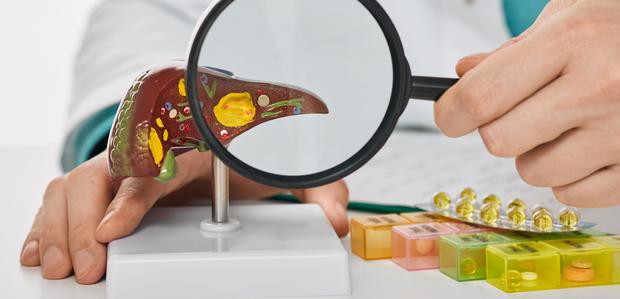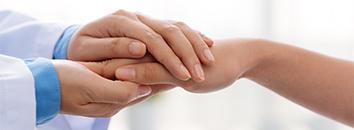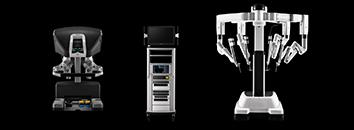Department of HPB Surgery

Gleneagles Hospital, Mumbai provide a comprehensive suite of treatments and diagnostic procedures for the treatment of various disorders related to liver. Staffed with the best of doctors, nurses and technicians by providing the best facilities for all Endoscopic and Colonoscopy procedures.
The Hepato-Pancreato-Biliary Surgery at Gleneagles Hospital, Mumbai is built around our team of globally recognised Liver and Pancreas surgeons. Working with other specialists, our teams of doctors provide consistent and seamless treatment to all patients suffering from various Liver and Pancreas Diseases.
We have the best of wards and operation theatres with advanced technological equipment to provide better service to all our patients.
We aim at providing treatments which utilize a minimally invasive approach which helps in reducing the pain and ultimately lowers the mental stress of the person.
The diagnosis of Hepatopancreatobiliary (HPB) disorders, including conditions that may require surgery or Liver Transplant, typically involves a combination of clinical evaluation, imaging studies, laboratory tests, and sometimes invasive procedures.
HPB surgery is a multidisciplinary field that often involves collaboration with other medical specialties, including medical oncology, radiology, gastroenterology, and pathology. The goal of HPB surgery is to provide comprehensive care for patients with complex liver, pancreas, and bile duct disorders.
Patients with conditions such as liver cancer, pancreatic cancer, gallbladder diseases, and other HPB disorders may be referred to the Department of HPB Surgery for specialized care.
Diagnosis and Treatments for Hepatobiliary Diseases and Conditions
The Department of HBP and Liver Surgery provides comprehensive consultation and care for all Hepatobiliary Diseases and Transplants. The department caters to comprehensive management of Liver Failure, Pancreatic Diseases and other related disorders. At Gleneagles Hospital, Mumbai, we undertake extensive diagnosis, expert care and specialist consultation to ensure patients receive personalised care and treatment. With state-of-the-art facilities and infrastructure, Gleneagles Hospital, Mumbai is your one-stop destination for comprehensive Liver and Pancreatic care. The Department of HPB and Liver Surgery offers treatment for the following diseases and conditions.
- Hepato-Pancreato-Biliary (HPB) Surgery
This aspect of the department deals with surgical interventions for diseases affecting the Liver (hepato-), Pancreas (pancreato-), and the Biliary system (biliary-). Common conditions addressed include Liver Tumours, Pancreatic Cancer, Bile Duct Diseases, and Gallbladder Disorders. - Surgical Interventions
Surgeons in this department perform a variety of surgical procedures, including Liver Resections, Pancreatic Surgeries, and surgeries to address Bile duct obstructions. These interventions are often intricate and may involve advanced techniques. - Pre and Post-Operative Care
The department provides comprehensive care for patients before and after surgical procedures. This includes pre-operative assessments, coordination of care with other medical specialities, and post-operative monitoring and management.
HPB surgery often involve a multidisciplinary team, including Hepatologists, Anaesthesiologists, Critical Care specialists, nurses, and other healthcare professionals. Collaboration is crucial to ensuring comprehensive and effective patient care.
We have the best of wards and operation theatres with advanced technological equipment to provide better service to all our patients. Gleneagles Hospital, Mumbai offers treatments for the people suffering from various Liver, Pancreas, and Biliary Diseases mentioned below:
- Pancreatic Disorders
- Gastrointestinal Cancers
- Portal Hypertension
- Acute Inflammatory Disease Treatment
- Liver Surgery
- Bile duct Injury
- Malignant diseases
- Splenectomy
Research and Innovation: Many departments of HPB surgery and liver transplant are actively involved in research to advance surgical techniques, improve outcomes, and contribute to the broader understanding of liver, pancreas, and biliary diseases.
Education and Training: These departments often play a role in the education and training of medical students, residents, and fellows, contributing to the development of future specialists in the field.
Our Doctors
View all
Dr Gaurav Chaubal
Director
MBBS, MS (General Surgery), MCh (Surgical Gastroenterology) AIIMS- Delhi, Fellowship in Abdominal Transplant Surgery, Duke University Medical Hospital, USA

Dr Aditya Nanavati
Senior Consultant
MBBS, MS, Fellowship in Abdominal Transplant Surgery (Duke University, USA)

Dr Hunaid Hatimi
Senior Consultant
MBBS, MS, DNB, MCh (GI Surgery), Fellowship in HPB Surgery And Liver Transplant
The responsibilities of the Department of HPB Surgery may include:
- Diagnosis
- Treatment Planning
- Surgical Interventions
- Postoperative Care
- Collaboration
- Research and Education
- What is Bile Reflux?
Bile is a greenish-yellow digestive fluid that is produced in the Liver and is stored in the gallbladder. It helps in the digestion of fats, and the elimination of worn-out red blood cells and toxins from the body. Bile reflux occurs when bile backs up or refluxes into the stomach. It is accompanied by acid reflux, which is the reflux of stomach acids into the Oesophagus.
Bile reflux and acid reflux are different medical conditions. Acid reflux may be caused when the patients do not respond properly to powerful acid-suppressant medications. Bile reflux cannot be completely controlled by changes in diet or lifestyle. Treatment is required.
Bile juice gets mixed with food in the duodenum and enters the small intestine through the pyloric valve. The pyloric valve usually opens slightly to allow liquefied food into the stomach. In the case of bile reflux, the valve does not close properly, and bile washes back into the stomach. This occurs when the lower Oesophagal Sphincter (which separates the oesophagus and stomach) malfunctions. The weakened valve leads to the backwash of bile into the esophagus.
Bile reflux can lead to complications such as GERD, Barrett’s esophagus, and esophageal cancer.
Bile Reflux Causes
The causes of bile reflux include, but are not limited to:
Surgery Complications: Gastrectomy and gastric bypass surgery are the most common causes of bile reflux.
Peptic Ulcers: A peptic ulcer blocks the pyloric valve, not allowing the stomach to empty up. Stagnant food in the stomach leads to increased gastric pressure. Thereby, bile backs up into the esophagus.
Cholecystectomy: Patients who had a cholecystectomy (removal of the gallbladder) are more susceptible to bile refluxes.
Bile Reflux Symptoms
You may experience certain signs and symptoms due to bile reflux, which includes:
- Cough
- Nausea
- Vomiting
- Hoarseness
- Frequent heartburn
- Unintentional weight loss
- Pain in the upper abdominal area
Diagnosis
Your doctor would order certain diagnostic tests to confirm the bile reflux which includes:
Endoscopy: Endoscopic study reveals the presence of peptic ulcers or any inflammation in the stomach and esophagus. This procedure is performed using an endoscope (camera), a thin and flexible tube, if required tissue samples can also be collected by endoscopic study for testing Barrett’s esophagus or esophageal cancer.
Esophageal Impedance: Esophageal impedance is performed to identify whether the gas or liquids reflux into the esophagus. This procedure is performed by using a catheter and a probe that is placed into the esophagus.
Ambulatory Acid Tests: Ambulatory acid tests are performed to identify the frequency and duration of refluxes that occur in your esophagus. These tests are also helpful to rule out acid refluxes. The tests are performed by using a catheter and a probe.
Bile Reflux Treatment
Lifestyle modifications may not be effective for treating bile reflux. Therefore, a prompt medical treatment would be recommended for treating the bile reflux. Your doctor will prescribe appropriate medications which include:
Ursodeoxycholic Acid: It helps to promote bile flow. It also decreases the frequency and severity of the symptoms.
Bile Acid Sequestrants: These disrupt the bile circulation but may pose side effects such as bloating.
Proton Pump Inhibitors: These medications block acid production.
If the bile reflux does not subside with medications, your doctor would recommend surgical options, which include:
Anti-Reflux Surgery (fundoplication): In this procedure, the fundus is wrapped and sewed around the lower esophageal sphincter to strengthen the valve and reduce acid reflux. Diversion Surgery: It is a weight-loss surgery that is recommended for patients who have had previous gastric surgery with pylorus removal. In this procedure, a new connection is made for the drainage of bile further lower in the small intestine, diverting the bile juice away from the stomach.
FAQ – Bile Reflux
Bile Reflux vs Acid Reflux?
Bile reflux and acid reflux are different medical conditions. Acid reflux may be caused when the patients do not respond properly to powerful acid-suppressant medications. Bile reflux cannot be completely controlled by changes in diet or lifestyle. Treatment is required.
How serious is bile reflux?
Bile reflux can lead to complications such as GERD, Barrett’s esophagus, and esophageal cancer.
How do you know if you have bile reflux?
Signs and symptoms due to bile reflux includes Cough, Nausea, Vomiting, Hoarseness, Frequent heartburn, Unintentional weight loss, Pain in the upper abdominal area.
- What is Gilbert’s Syndrome?
Gilbert’s syndrome (GS) syndrome is a mild genetic liver disorder. It is a harmless condition, in which the liver does not process the bilirubin (formed by the breakdown of hemoglobin) completely. GS is also referred to as constitutional hepatic dysfunction and familial nonhemolytic jaundice. It is an inherited deficiency of an enzyme that is involved in the metabolism of bilirubin. Approximately 3-12% of people may have GS.
Normally, the GS cannot be identified by the symptoms until it is observed in the blood test reports. Mild elevations of bilirubin in blood occur during prolonged fasting, consumption of alcohol, or dehydration. The elevated levels of unconjugated bilirubin in the blood are called hyperbilirubinemia. It is caused due to the reduced activity of glucuronyltransferase.
GS is mostly seen in males, and it is an inherited gene disorder that is present during birth. It cannot be noticed until puberty, as the production of bilirubin increases at this stage.
Symptoms
The elevated levels of bilirubin in blood can lead to yellowing of skin and eyes. Certain conditions like stress, dehydration, illness, cold lack of sleep, fasting, menstruation, and strenuous exercises aggravates bilirubin levels.
Some of the Gilbert’s syndrome symptoms are:
- Feeling sick
- Dizziness
- Abdominal Pain
- Fatigue
- Loss of appetite
- irritable bowel syndrome (IBS)
- Lack of concentration
- Straw colored urine
However, these signs and symptoms may not directly indicate GS, they are also seen in other health conditions.
Causes
It is believed that GS is due to reduced activity of an enzyme that is useful in the processing of bilirubin. It is an inherited condition and the cause of reduced activity of the enzyme is unknown.
Diagnosis
GS is diagnosed by a general physical examination followed by blood tests, urine tests, and liver function tests. The elevated bilirubin levels can be an indication for GS. Sometimes, genetic testing may also be suggested by the doctor to confirm the diagnosis.
Treatment
There is no specific Gilbert’s syndrome treatment, as the bilirubin levels in the blood fluctuate and the condition becomes normal on its own.
- What is Pancreatic Cysts?
Pancreas is a large organ located behind the stomach in the abdomen, secreting digestive enzymes, and hormones which help to convert food into energy. A pancreatic cyst is a closed saclike pocket filled with fluid and is located on or in the pancreas. These cysts can be either benign (non-cancerous) or malignant (cancerous). The pancreatic cysts remain asymptomatic and are typically found during imaging testing for other health conditions. Pancreatic cysts result from rare diseases, such as von Hippel-Lindau disease.
Pancreatic cancer is the twelfth most common cancer in the world, with 338,000 new cases diagnosed in the year 2012.
Types of pancreatic cysts
Pancreatic cysts are of nearly 20 types. Some of the most important types include:
Pseudocysts – These are mostly made of fluid, and you may be at a risk of developing them if you have had a history of pancreatitis or pancreatic injury.
Serous Cystadenomas (SCAs) – These are benign cysts containing fluid with thick, fibrous walls. They may cause pain, jaundice, or make you feel uncomfortable as they grow.
Intraductal Papillary Mucinous Neoplasms (IPMNs) – These are the most common type of pancreatic cysts which develop within the ducts connecting pancreas to the intestines. The cells of the cysts produce a large amount of proteins that form mucus.
Mucinous Cystic Neoplasms (MCNs) – These are precancerous growths that start in the body and tail of the pancreas and more commonly seen in women rather than men.
Signs and symptoms
Pancreatic cysts are usually asymptomatic. Some patients may have fewer symptoms that may occur days to months following a pancreatitis attack such as:
- Severe and persistent pain in the abdomen, sometimes at the back
- Nausea and vomiting
- Abdominal bloating
- A mass of tissue can be felt in the upper abdomen
In some cases, cysts can become infected. Call your doctor immediately if you notice fever, persistent and severe abdominal pain, weak and rapid heartbeat, decreased consciousness, and blood in vomiting.
Causes
The exact cause of pancreatic cyst is still not known. Some cysts are believed to be associated with rare illness such as von Hippel-Lindau disease which is a genetic disorder affecting the pancreas. Pseudocysts often result from injury to the abdomen, such as an auto accident.
Risk factors
Heavy alcohol and gallstones increase the risk of pancreatitis, which in turn increases the risk for formation of pancreatic cysts.
Complications
The growth of pancreatic cysts is associated with the development of few complications which include:
- Infection, which may also lead to pancreatic abscess
- Pseudocyst rupture (breaking open or bleeding of the cyst which may be life-threatening)
- Obstructive jaundice may occur when a large cyst blocks the common bile duct, causing yellowing of the skin, mucous membrane, and eyes
- Increase in blood pressure of the portal veins requiring surgery
Diagnosis
Pancreatic cysts are hard to diagnose as the symptoms resemble many other disease conditions. The medical history of the patient is first assessed, and other diagnostic tests are recommended:
- CT scan – provides detailed information about the size and structure of the pancreatic cyst
- MRI scan – gives detailed information about the cyst, including whether the components of the cysts could cause cancer
- Endoscopic ultrasound – fluid is collected from the cysts to check the possible signs of cancer
Treatment
Pancreatic cysts are benign and may not require any treatment and can be left as such if it isn’t bothering you. But certain treatment options are recommended to prevent complications.
Drainage – endoscope, equipped with a needle is passed through the mouth into your stomach and small intestine to drain the cyst.
Surgery – this is recommended if the cyst is larger than 3 cm in size, if the cyst has a solid component, if the pancreatic duct is widened, and if the cysts are growing and causing pain. The whole of pancreatic cysts are removed, either via open surgery or laparoscopic surgery.
Prevention
The risk of formation of pancreatic cysts can be reduced by minimizing or avoiding alcohol intake. Alcohol intake may be directly responsible for the condition pancreatitis (inflammation of the pancreas), and indirectly for the formation of pancreatic cysts.
- What is Acute Pancreatitis?
Pancreas is a gland present behind the stomach in the upper abdominal region. It secretes enzymes and hormones that aid in digestion, breakdown of nutrients and regulation of glucose in the body. Inflammation of this gland is known as pancreatitis.
Pancreatitis is of two types namely, acute and chronic. Acute pancreatitis has a sudden onset and lasts for days to months whereas chronic pancreatitis develops gradually over years and lasts for comparatively a more long time.
Globally, 17 million cases of pancreatitis occurred in 2013, and this resulted in about 123,000 deaths, up from 83,000 deaths in 1990.
Acute Pancreatitis Causes
The single most common cause of acute pancreatitis is gall stones, and the single most common cause of chronic pancreatitis is alcohol. These two factors contribute up to 80% of the total pancreatitis cases.
Other causes of pancreatitis include infection, trauma, hypothermia, smoking tumors, inheritance, and certain medications (such as corticosteroids, diuretics, anticonvulsants, and antipsychotics).
Risk Factors
There are few risk factors associated with pancreatitis, the most important factors include:
- Gender: Males are at a greater risk of developing pancreatitis compared to females.
- Age: chronic pancreatitis starts between the ages of 30 and 40 and is rare in children.
- Family history: Inheritance of genes which result in conditions such as cystic fibrosis result in pancreatitis.
- Chronic alcohol and tobacco abuse: This may be the primary cause for the development of chronic pancreatitis.
- Blockage of pancreatic duct: Auto accidents or trauma may lead to blockage of pancreatic duct also known as distal pancreatitis.
Acute Pancreatitis Symptoms
The most common signs and symptoms of pancreatitis are severe pain in the upper abdomen radiating to your back, associated with nausea and vomiting. You may even notice abdominal tenderness, reduced bowel sounds.
Fever can be seen in few cases of acute pancreatitis. Fatty stools, unintentional weight loss, and diarrhea may be seen in few cases of chronic pancreatitis.
Complications
Pancreatitis can cause serious complications such as infection, pseudocyst, diabetes, malnutrition, abscess formation, and organ failure. If the fluid levels drop suddenly, it results in hypovolemic shock which is a medical emergency. In few cases, chronic pancreatitis may also lead to pancreatic cancer.
Acute Pancreatitis Diagnosis
Your doctor may initially perform a physical examination and review your medical history to diagnose the condition. Your doctor may also ask you questions about your lifestyle. Your doctor may also recommend other tests and procedures for diagnosis of pancreatitis, which include:
Blood tests – performed to evaluate blood levels of pancreatic enzymes (serum amylase and lipase).
Imaging tests – computed tomography (CT), magnetic resonance imaging (MRI), or ultrasound to detect the presence of gallstones and inflammation of the pancreas; abdominal ultrasound is the most reliable test to confirm the diagnosis.
Stool test – performed to identify fat content in the feces.
Your doctor may confirm the condition as pancreatitis based on the diagnosis if you meet two of the following three criteria:
- Upper abdominal pain radiating to the back
- Elevation of pancreatic enzymes by more than three times the normal value
- An imaging test showing characteristic changes
Treatment for Acute Pancreatitis
Management of pancreatitis often requires hospitalization (for stabilizing) followed by treatment of the underlying cause once inflammation of the pancreas is controlled.
To stabilize pancreas, your doctor may advise you to stop eating and gives pain killer medications. When the pancreatitis is controlled, you can start taking clear liquids and bland foods. Gradually, you can go for your normal diet. Intravenous fluids are administered to provide energy. In the case of chronic pancreatitis, pancreatic enzymes are prescribed in a tablet form to improve digestion. These pancreatic enzymes should be taken with each meal.
Once the pancreatitis is controlled, treatment is given to manage the underlying cause. If alcohol abuse is the main cause, your doctor recommends you to opt for a treatment program to abstain alcohol. If pancreatitis is due to the presence of gallstones, cholecystectomy is performed to remove the gallbladder. Surgery to the pancreas is performed in some cases to remove diseased tissue.
Self-Management
Following these measures may help you for a speedy recovery and prevents further complications:
- Consuming diet which is low in fats
- Eating small meals to minimize the burden on your digestive system
- Stopping alcohol abuse to prevent further damage
- Quitting smoking to fasten recovery
- Trying yoga and relaxation techniques such as deep breathing to reduce pain
FAQ
Why Choose Us
-
Patient Experience
Your care and comfort are our top priorities. We ensure that the patients are well informed prior to every step we take for their benefit and that their queries are effectively answered.
-
Latest Technologies
The Gleneagles Hospital's team stays up to date on the advancements in medical procedures and technologies. Experience the Future Healthcare Technologies now at Gleneagles Hospital.
-
Providing Quality Care
Strengthening lives through compassionate care, innovative therapies and relentless efforts. It reflects in the DNA of our passionate team of doctors and dedicated clinical staff.










